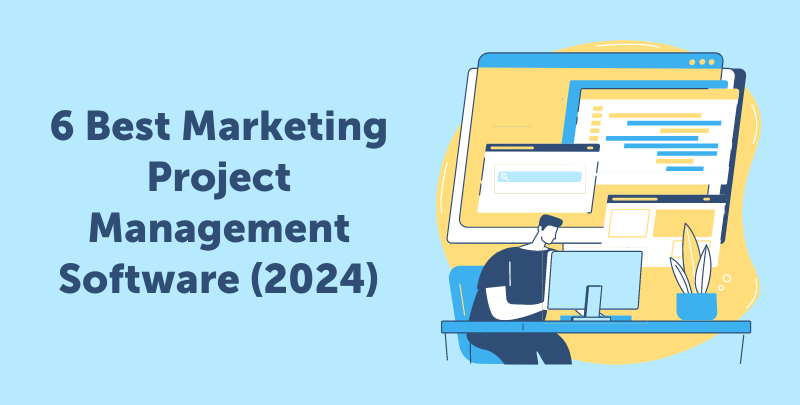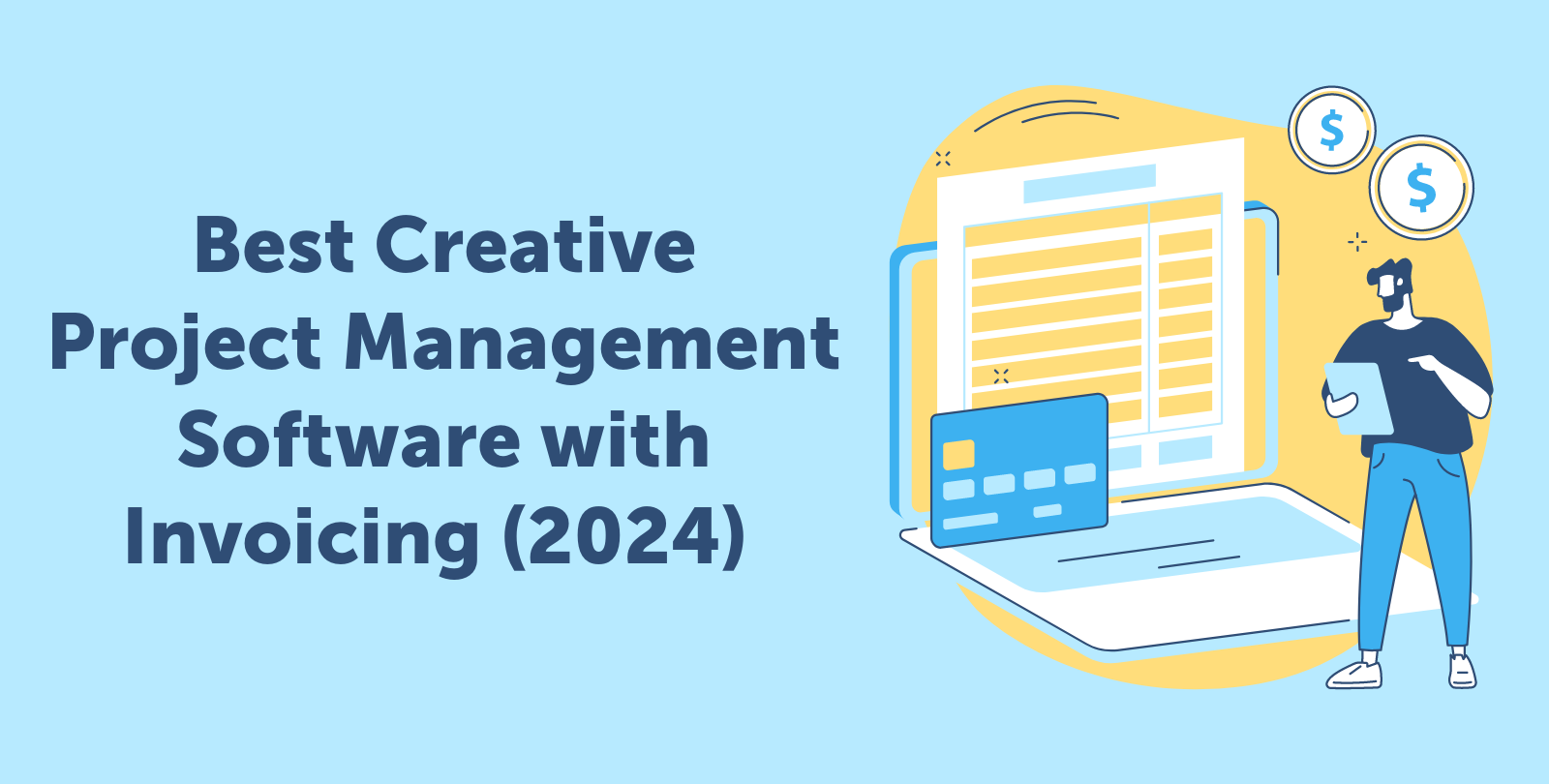Get all our templates, tips, and fresh content so you can run effective, profitable, low-stress projects in your agency or team.
A high-quality marketing operations software should let you manage the following:
- Projects and campaigns: Plan the details, send estimates, monitor progress, track project hours, and stay the course.
- Resources: Schedule staff, track utilization, hire freelancers, and prepare your agency for upcoming work.
- Finances: Create project or campaign budgets, monitor expenses as projects progress, report on profitability, and manage (client and vendor) invoices.
- Clients: Work new leads into opportunities and manage existing relationships to retain a loyal client base.
- Communication: Easily manage internal and external communications, including file reviews.
Of course, your software should also facilitate collaboration so that managers, project teams, clients, and vendors can seamlessly collaborate in real-time.
There are typically two types of operations management (or work management) solutions on the market:
- Some combine everything you need under one roof — project, resource, and financial management. They include tools like project management, time tracking, accounting software, customer relationship management (CRM) systems, client and vendor portals, and more.
- Others are “app-powered” and work by integrating the different software in your tech stack — like your project management software, digital asset management system, accounting solution, time tracking tool, etc. — to serve as a single source of truth. Integrating all software means they can communicate in real-time to support project workflows.
In most cases, teams choose option A because it allows them to consolidate their tech stack and shave software costs. (Why pay for a dozen tools when you can get everything for one price?) It also saves you from manually compiling your data to get the reports you need to grow your agency — and removes the risk of human error from doing so.
However, you might prefer option B if you’re deeply embedded in your existing tech stack — for example, you have an accounting system you really love — and you want a solution to push data between systems.
We’ve worked with marketers (in in-house settings and agencies) for over 30 years and have experience consulting teams in various areas. We’ve built our marketing operations solution, Workamaig,to support creative workflow best practices; it includes all of the software and tools marketing teams need to manage projects, people, and finances.
So, we created this guide reviewing Workamajig and five other highly rated marketing operations management software so you can compare the most popular options. We cover both types of work management solutions, so you can find one that fits your preferences.
1. Workamajig
Operations Management for Marketing Teams & Creative Agencies

Workamajig is a comprehensive operations management hub that combines project intake, project planning and monitoring, staff scheduling, time tracking, team and client collaboration tools, accounting, and financial reporting under one roof.
We work with teams of all sizes — small agencies and marketing teams in large enterprises (like Progressive Insurance) —and can configure our platform’s various features to support your processes. We provide personal onboarding to walk you through each module, show you the ins and outs of Workamajig, and simplify adoption.
Despite our platform’s extensive feature set, most marketing departments can be fully up and running in <60 days because we provide a dedicated account manager to help you every step of the way.
After switching to Workamajig, teams report:
- More organized project and campaign management — managers can quickly check project status, see which marketing projects require attention, and avoid delays or unexpected costs.
- Improved resource allocation — it’s easier to assign the right people to tasks, plan work into the future, and keep workloads balanced.
- Enhanced productivity: Project teams, freelancers, and clients can collaborate throughout the project workflow and view the full history and details.
- Better controls and strategic planning — all project components are managed in the same system so teams can oversee tasks, people, and budgets, and nothing slips through the cracks.
- Increased profitability — because teams can more strategically plan marketing projects, allocate resources, manage budgets, collaborate, and keep projects on course, they can ensure project ROI and improve overall profitability.
We offer all clients a personalized demo of Workamajig so they can see how our software can support their workflows and team members. (You can schedule your demo here.)
In the following sections, we’ll review our platform’s core features and how they work.
Project Management Suite
The project management suite includes:
- Project intake
- Project planning
- Project monitoring — including time and budget tracking
Project Intake
Workamajig includes a native CRM for agencies to manage new leads through the pipeline. If you convert these opportunities, our system will create an active project with all details and attachments, including specs from sales conversations.
![Workamajig: Sales Dashboard and Opportunities [GIF]](https://www.workamajig.com/hs-fs/hubfs/Workamajig%20Sales%20Dashboard%20and%20Opportunities%20%5BGIF%5D.gif?width=1920&height=1050&name=Workamajig%20Sales%20Dashboard%20and%20Opportunities%20%5BGIF%5D.gif)
This way, managers can move right into project planning and finalizing estimates.
Workamajig also includes project intake tools to support both in-house teams and agencies.
In-house teams typically use project intake forms to gather requests from other departments. They can design these for different project types and include custom fields to collect the necessary information. New requests are automatically routed to managers to streamline approval processes.

This feature is also available for agencies but is not commonly used.
Our system also includes project templates for in-house teams and agencies to kick off projects — after you’ve learned what the different departments in your organization require or the types of projects clients request.
You can build templates with all project details to automate future project planning: create tasks, specify time allotments per task, assign team members to tasks, and set budgets. (You can also tweak templates before pushing projects to the schedule.)
Project Planning
With Workamajig’s task, resource, and vendor management tools, it’s easy to plan project details and build thorough (accurate) estimates. Our platform also integrates with Strata’s media buying system and other business applications so that you can consider all project-related costs in your planning.
Within the project dashboard, you can see the project queue — including what’s in progress and what’s new.
Then, you can select a project to build the task list. In task cards, add details so others understand the expectations and goals of their work, include attachments or other helpful resources, and specify time allotments.
![Workamajig Dashboard: Start at the project schedule, Allocate hours & set start dates for individual tasks & revisions [GIF]](https://www.workamajig.com/hs-fs/hubfs/Workamajig%20Dashboard%20-%20Schedule%20Hours%20and%20Tasks%20%5BGIF%5D.gif?width=1725&height=852&name=Workamajig%20Dashboard%20-%20Schedule%20Hours%20and%20Tasks%20%5BGIF%5D.gif)
You can add users to task cards to assign work or use the staff scheduling dashboard to manage workloads.
Here, you can see a list of teammates with:
- Their total bandwidth
- The number of hours they’re currently scheduled (with a breakdown by day)
- The number of hours remaining

This lets you quickly visualize workloads to see if you’re assigning too much work to one person vs. another; it also helps you plan future work to keep team members’ schedules consistent.
The bottom of this dashboard also includes a list of unassigned tasks (by service or category) so you can catch anything you’ve missed and ensure all projects are covered.
Workamajig also includes vendor management and vendor portals so you can source freelancers for projects and manage those relationships.
Our vendor management tool allows you to request quotes, review bids, and assign work. Then, you can create dedicated portals for each vendor you work with. You can communicate with vendors through these portals and save all conversations.
After completing work, vendors can send invoices, which you can then reconcile with work orders and issue payments. We’ll talk more about the accounting suite and vendor invoice management later.
Lastly, our system integrates with Strata so you can plan media buys and add details from insertion orders to estimates. You can also add other services or project costs (say you’re running CPC campaigns for clients) to estimates before finalizing and sending.
This combination of features lets you create estimates with all line items and (projected) billable hours. Then, after projects wrap, estimates are converted to invoices — again, more on billing and invoicing later.
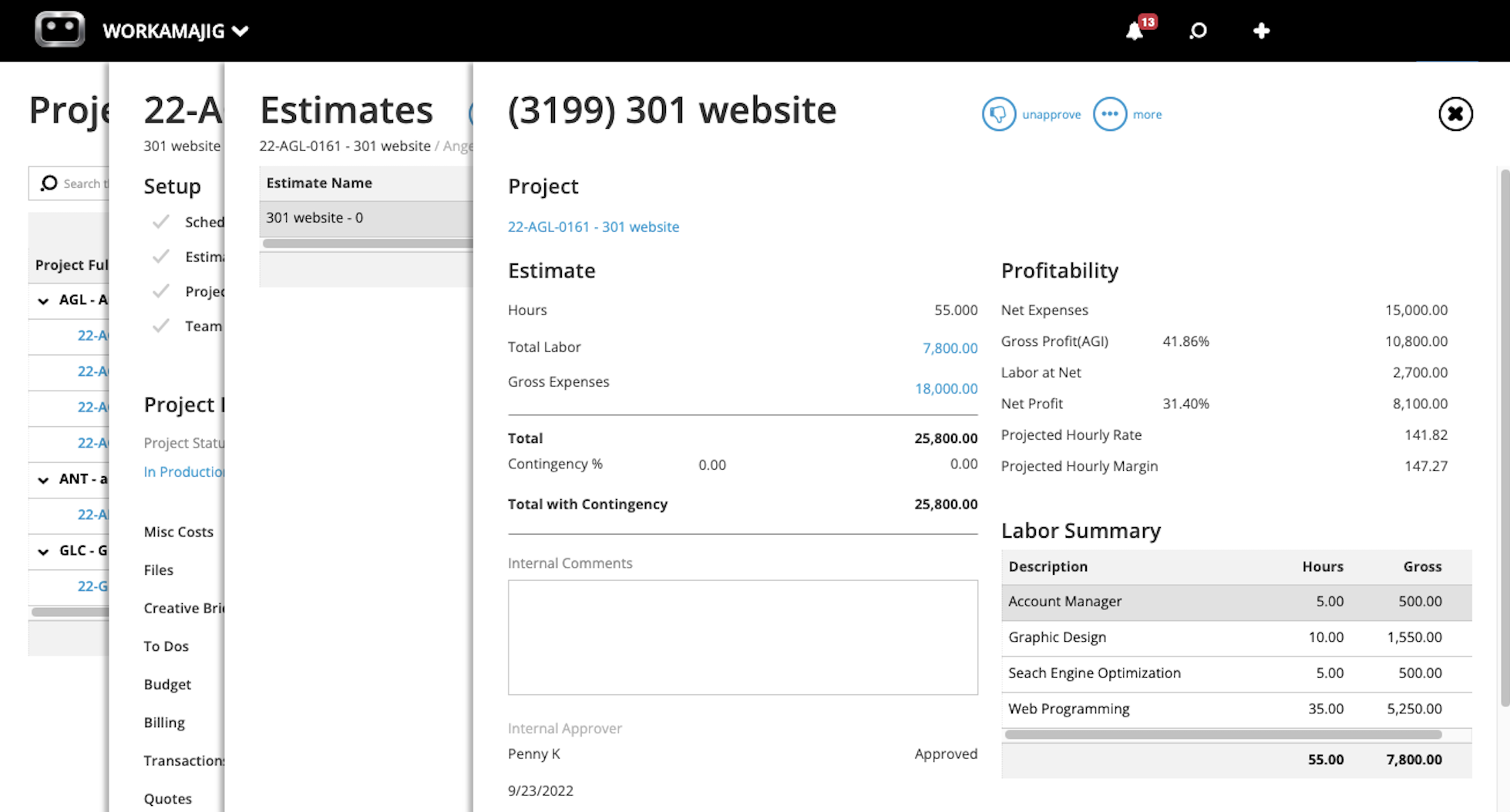
Project Monitoring
Once projects are in progress, you can monitor their status in the central projects dashboard.
Our system supports Waterfall and Agile workflows to accommodate lengthier feedback processes and manage projects through completion. Workamajig’s workflow automation tags team members when tasks are ready to start or require feedback to keep projects moving.
Users like our project monitoring dashboard because it allows them to color-code projects and phases and easily see their progress.
![Workamajig dashboard: Projects and Project Status [GIF]](https://www.workamajig.com/hs-fs/hubfs/Workamajig%20-%20Projects%20and%20Project%20Status%20%5BGIF%5D.gif?width=1714&height=853&name=Workamajig%20-%20Projects%20and%20Project%20Status%20%5BGIF%5D.gif)
Our system also sends notifications about projects or campaigns that risk exceeding projected timelines or budgets.
In the GIF above, several columns show yellow highlights. These indicate to project managers that projects are moving slower or costs are higher than anticipated. This gives managers time to hop in, diagnose issues, and correct course.
Projects that have exceeded timelines or budgets are highlighted in red. For example, the SF website project above shows the Project Timeline and % Complete highlighted in red, telling project managers that this campaign ran over the deadline.
Our system will show a new projected end date so managers can communicate this to clients without guesswork.
Time Tracking
Workamajig includes native time tracking to facilitate our project monitoring dashboard’s real-time updates. Here’s how it works:
- Team members record time directly on task cards (via manual time entry or timer). They can also connect their work calendars to pull in meeting hours.
- Managers can view project hours per task — compare budgeted vs. allocated vs. actual hours — and use this data for future project planning.
- All employee hours are tied to their rates, so our system updates project budgets as employees complete tasks.
Then, this dashboard can readjust timelines (forward or backward) as tasks are marked complete. It's like how a car GPS can shave or add time to the ETA, depending on whether you take a shortcut or are stuck in traffic.
Learn more: How to Track Creative Project Management Hours
Team & Client Collaboration
Workamajig shows everyone — project managers and team members alike — exactly what to work on and when with the Today dashboard.
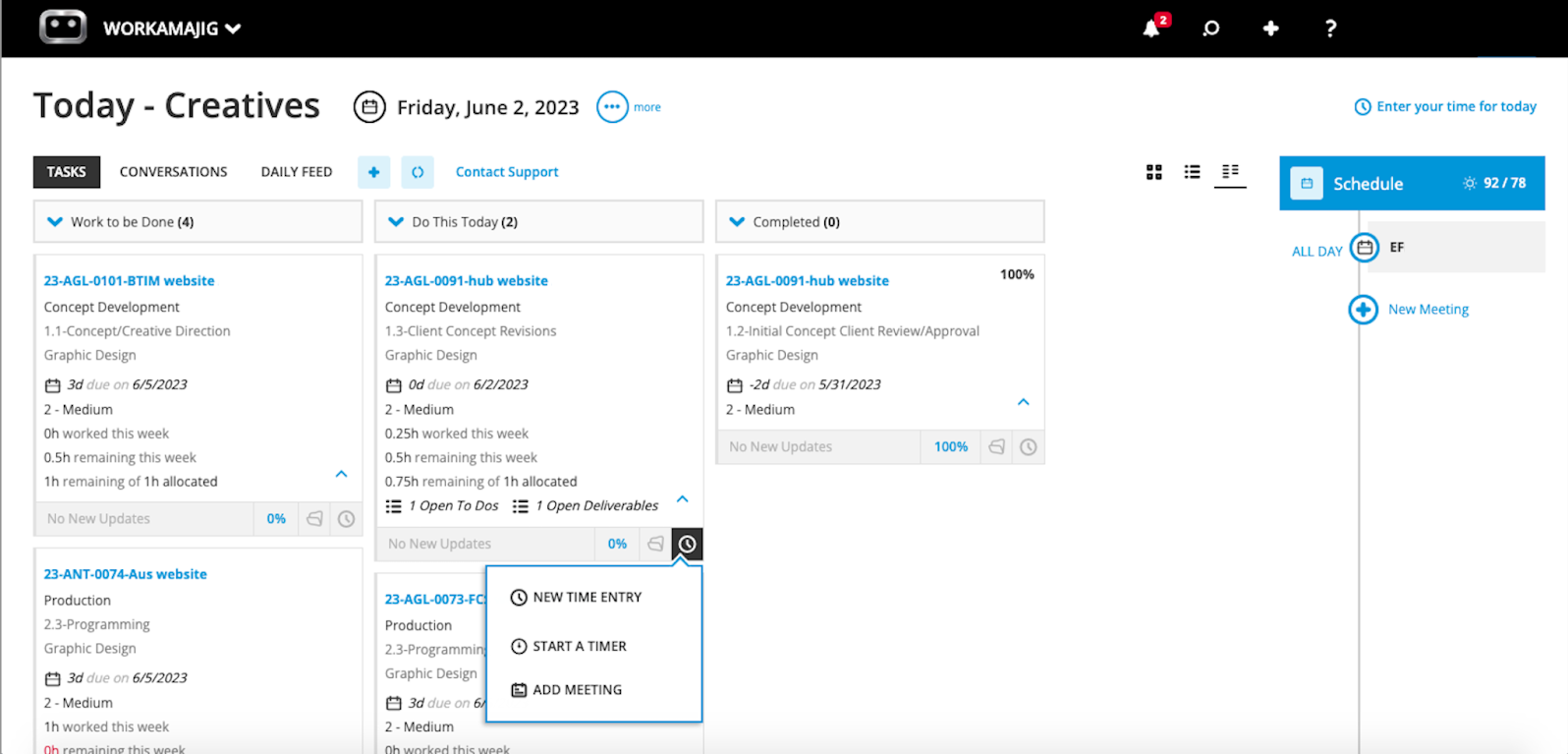
It outlines all tasks, time allotments, and due dates for the day and week ahead so team members know their schedule and how to prioritize their work. This is not only convenient for users, but it helps avoid bottlenecks in marketing processes.
Managers will also see an activity feed to keep up with projects and admin duties, such as project requests, purchase orders, and invoices to review.
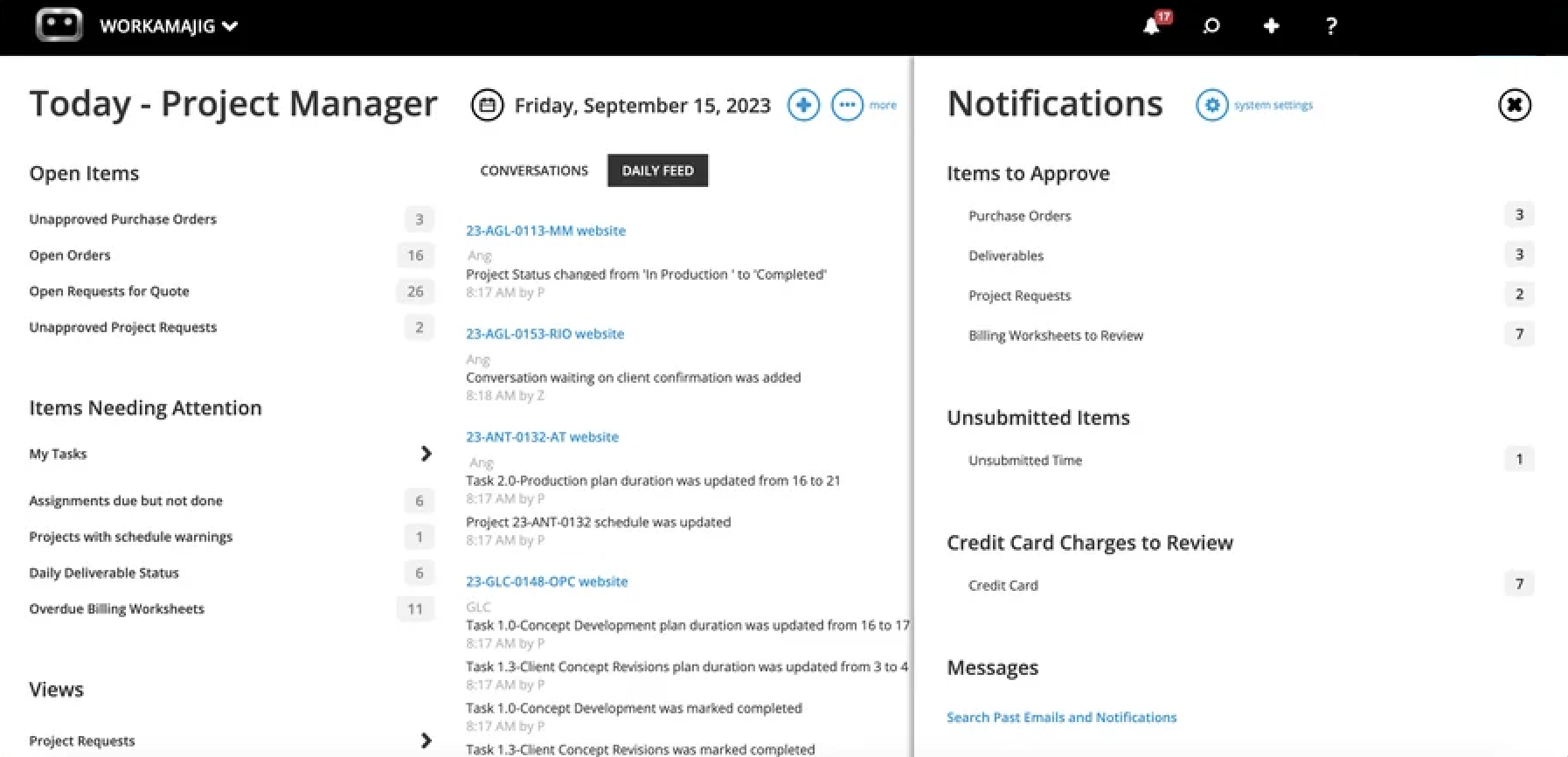
Next, Workamajig includes various collaboration tools at the task card level, so you don’t have to take feedback conversations or store content for projects outside the platform. The entire history can be tracked through the task card so that all stakeholders are up to speed.
For starters, managers can provide details in task cards so those contributing to projects know the full scope. Other team members can tag managers in comments if they have questions before or during the workflow.
Then, users can upload content as they work for reviews and feedback. (Users can also organize marketing collateral and brand assets into different folders to keep task cards clean.)
Workamajig includes internal proofing tools so others can annotate files and designers can see the requested revisions. Our system tracks each file’s version history as designers edit and upload new versions.
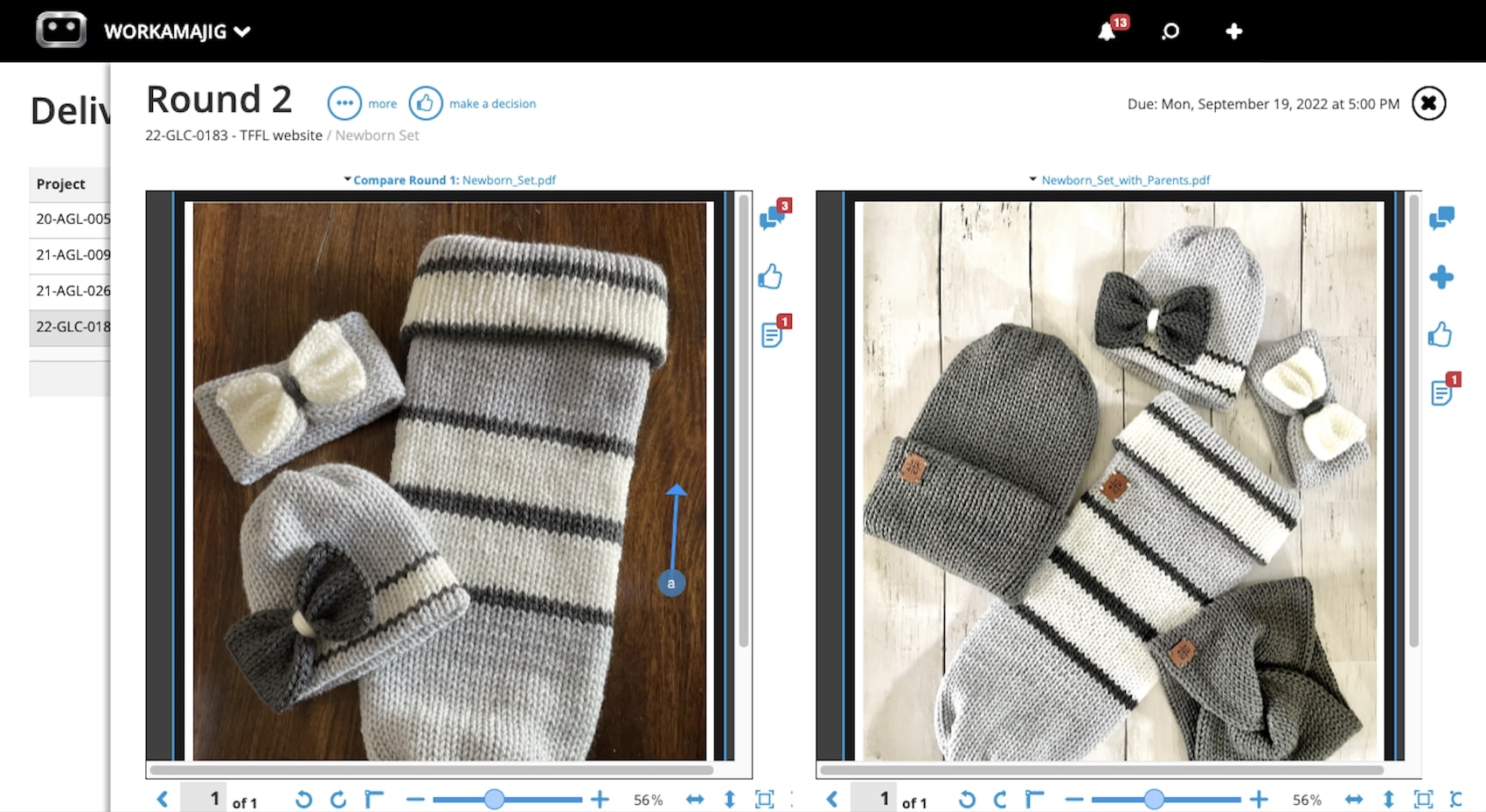
Clients, managers, and anyone involved in the project can join feedback discussions to speed up this process. Then, clients or requesters can access the final deliverables within Workamajig.
Client Portals
Like the vendor portals discussed above, you can create dedicated client portals to manage each relationship separately.
In-house teams may use these to manage different departments in their organization, while agencies use them for client management.
These portals allow users to:
- Request projects
- Track project progress
- Join feedback discussions and collaborate with project teams
- Monitor project budgets and view final invoices
- Send secure online payments for work
You can create unlimited vendor and client portals at no extra cost.
Workamajig Accounting Suite
As a comprehensive operations management tool, Workamajig includes full accounting software (to replace solutions like Xero, QuickBooks, NetSuite, etc.).
This allows you to track budgets and costs within the project workflow, manage invoices and payments, and report on project and agency profitability.
Accounts View & Integrations
When you open the accounting dashboard, you can see a quick list of all connected accounts and their current funds.
Workamajig integrates with bank and credit card accounts (via Plaid) to view their status and consolidate project-related charges (perhaps you pay for client CPC campaigns or social media promotions with a business credit card).
Our bank and credit card integrations also allow users to analyze agency or department spending, run expense reports, and manage reimbursements.
Invoicing & Billing
As mentioned, Workamajig automates invoicing by converting estimates into invoices when projects are complete. Managers are notified when new invoices are ready to review so they can make any final adjustments before sending them to clients.
Our system lets you change invoice format or customize invoices with brand logos or personalized messages. (You can add new messages with each client invoice for a more human touch.)
Workamajig supports multiple billing methods (time and materials, media, fixed fee, and retainer), as well as pre-billing, advanced billing, and work-in-progress billing.
Vendor Invoice Management
As we mentioned when discussing vendor portals, vendors can share invoices through Workamajig so you can automatically match them with work orders or POs and issue payment.
Online Payments
Workamajig integrates with various payment processors and online payment solutions — Payflow Pro, Authorize.net, AMEX vPayment, CSI vCard, and FastPay — to process client payments and issue vendor payments.
Receipt Management
You can also upload and store all receipts for project-related expenses in Workamajig to organize them for later reference and use them to reconcile invoices.
Financial Reports & Agency Insights
Workamajig also includes a native reporting dashboard with an array of reports to measure profitability and productivity. You can also create custom reports to monitor specific project metrics.
First, you can look at profitability by project. We include a breakdown of all costs after the project wraps so you can do this analysis. Then, we also include Profit & Loss reports (for clients, marketing projects, and marketing campaigns) so you can see where you’re earning the most revenue.
Workamajig also includes General Ledger reports to monitor GL activity and cash flow. It also supports cash projections and revenue forecasting to see how scheduled projects can impact profitability.
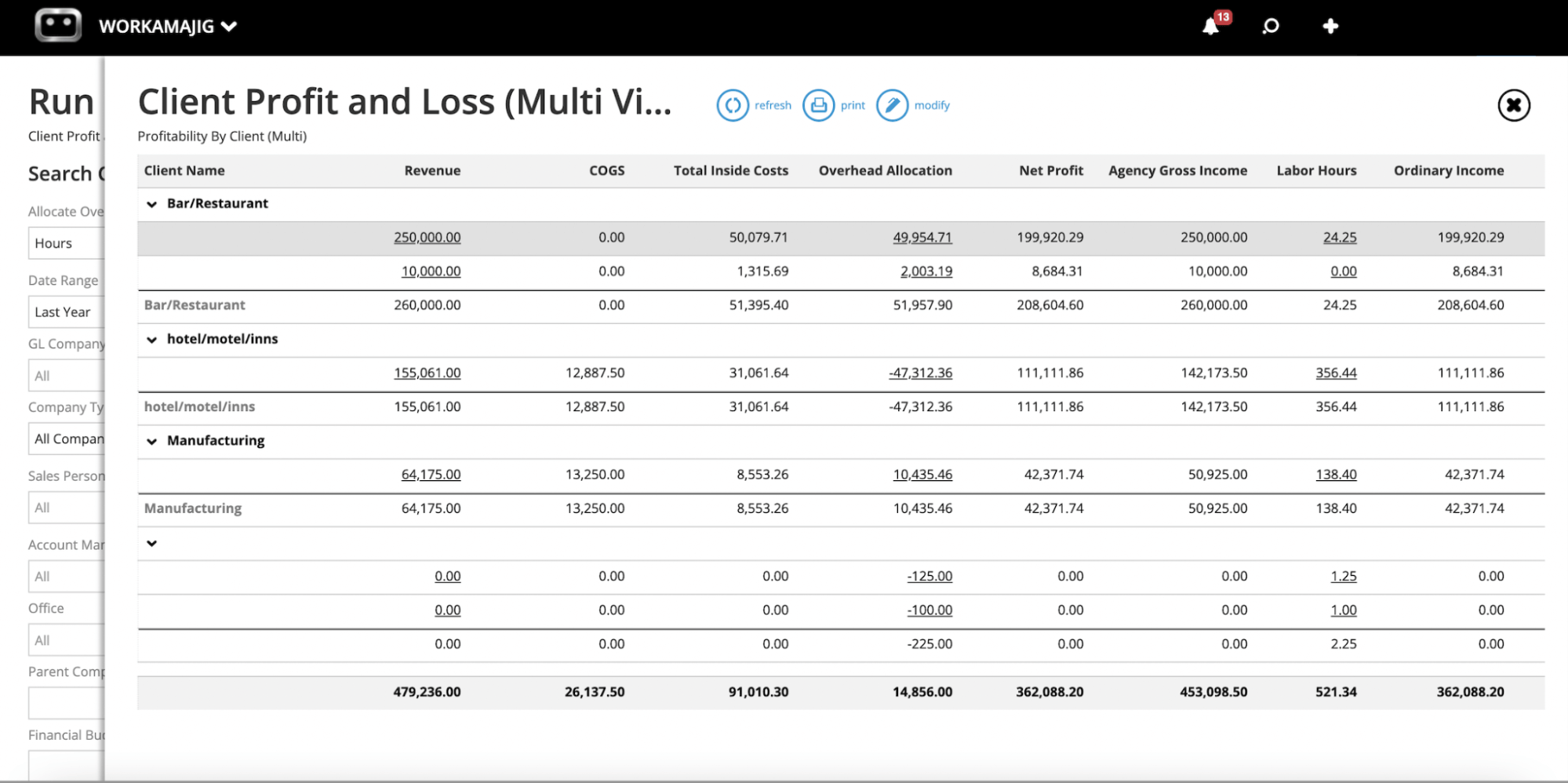
We also provide hourly reports to monitor resource utilization and understand where employees spend their work hours. You can see hours spent by client, project, or marketing campaign, or look at hours logged by department or employee.
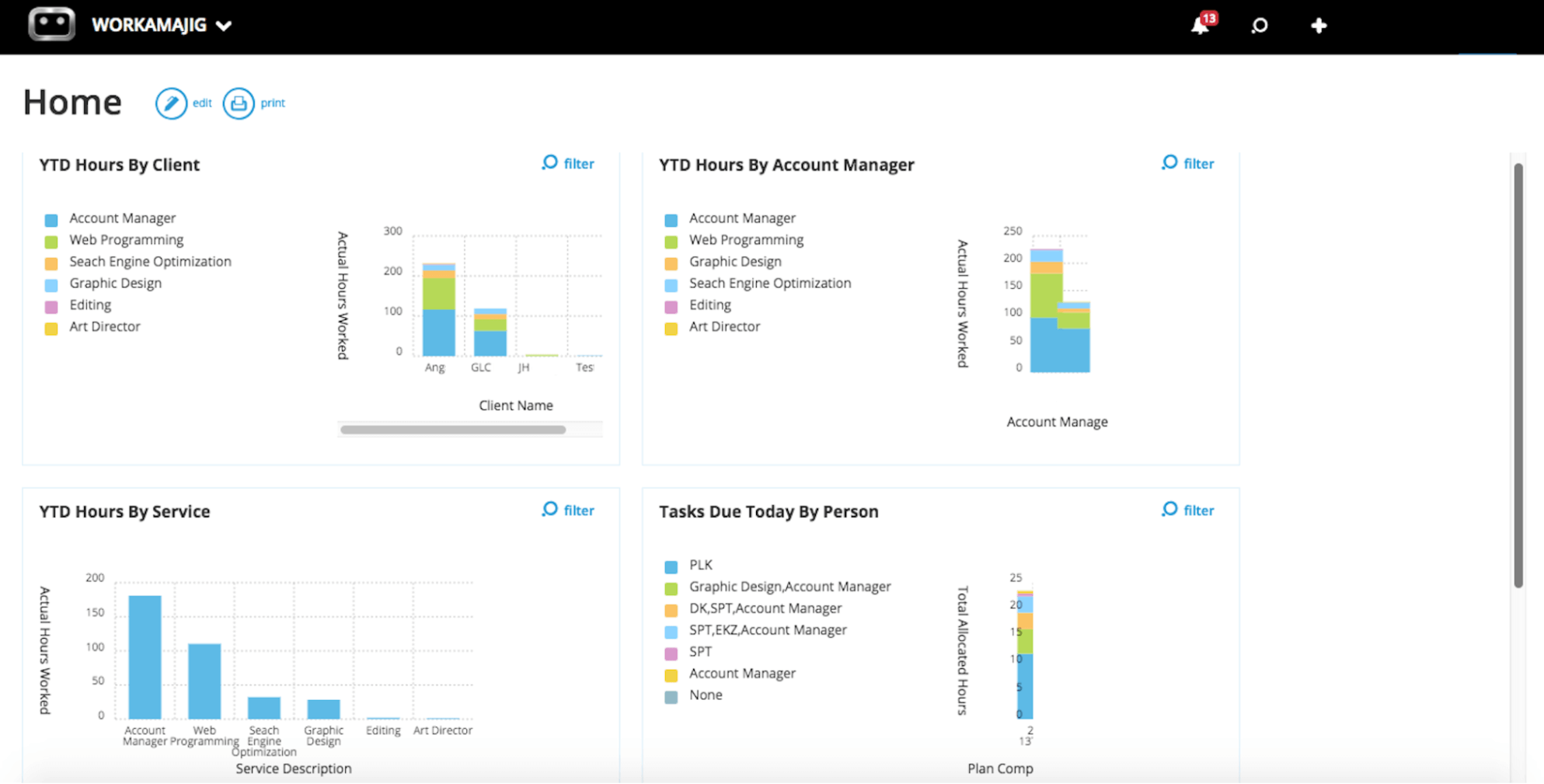
With financial and hourly reports at your fingertips, you have all the insights to guide decision-making in project planning, process optimization, and growing your bottom line.
Read more: Best Creative Project Management Tools with Financial Tracking
Packages, Pricing & Getting Started
We offer solutions for in-house teams and agencies, as well as custom enterprise packages.
Pricing is based on team size and per user.
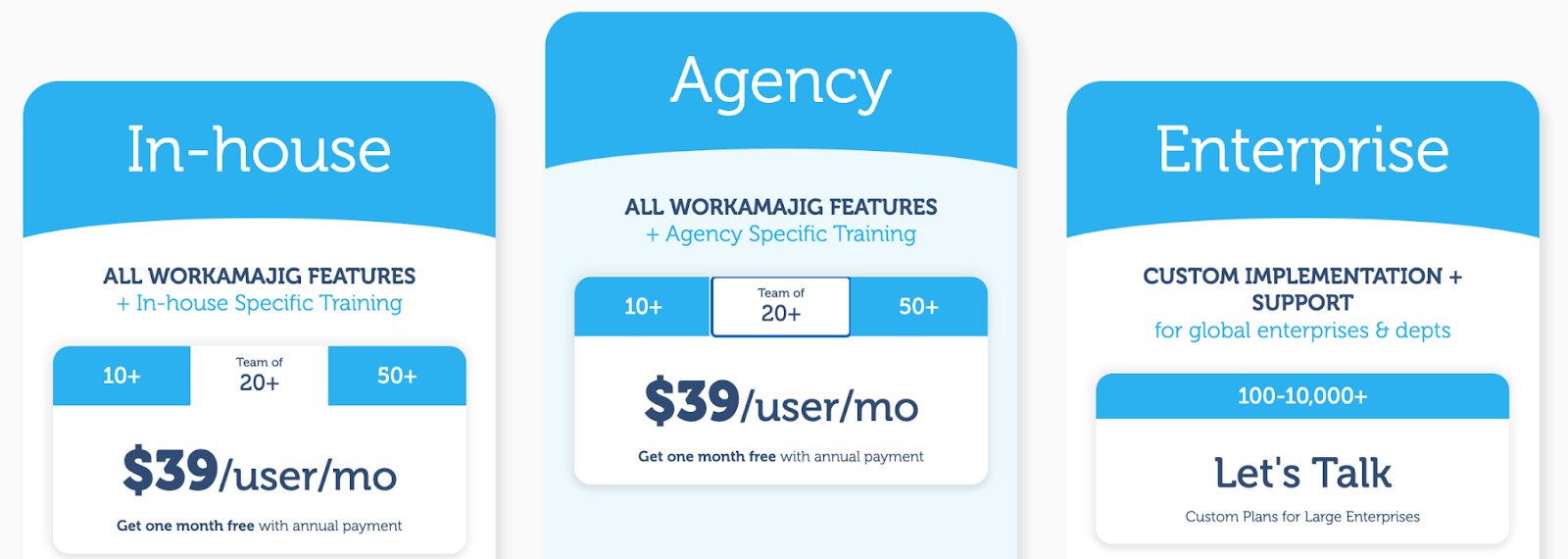
As we discussed above, we offer guided onboarding and training for all clients so we can learn about their current processes, tailor our solution to fit specific workflows and requirements, and train users through adoption.
Our team will ensure you’re up and running, and you’re assigned a dedicated account manager to help whenever you have questions or want to make adjustments to the platform.
Request a personalized demo of Workamajig to talk with a member of our team.
2. Clients & Profits

Clients & Profits is a popular agency management tool designed for marketers and marcoms, advertising agencies, and designers. They’ve been in business since 1986 and have experience with a plethora of creative teams.
This option combines project management, resource management, accounting, and financial management and includes a suite of media planning tools (with media buying integrations) to support those workflows. They offer a tour of their software here.
Teams like working with Clients & Profits for the customer experience. They’ll train you on the software and offer consulting to guide marketing strategies, project planning, and process optimization — to support your overall marketing efforts.
The downside with Clients & Profits is that it’s a local application you download and install on your computer. (They offer desktop apps for Mac and Windows.) You can backup data to C&P’s cloud (the system performs automatic daily backups), but you’re still working on a desktop app.
Users also note the app can be clunky, and the UI is a little dated. Some pass on this option because they prefer more modern, cloud-based marketing ops software. On the contrary, terms that require or prefer on-prem like Clients & Profits because they’re one of the only on-prem solutions in this category.
Notable Features
- Project intake management & project request forms
- Project & task management
- Resource management — with live scheduling for staff members
- Project monitoring
- Time tracking
- Collaborative feedback tools for project teams & clients
- Portfolio management
- Accounting software
- Automatic billing & invoicing
- Vendor invoice management
- Financial reporting
- Integrations with bank and credit card accounts & media planning systems
- Adobe XD plugin
- Workflow automation tools
Pricing

Clients & Profits offers solutions for design studios, advertising agencies, and marcoms. You choose the package that suits you and pay per user.
3. Advantage
.png?width=2000&height=878&name=Advantage%20Simpli.fi%20homepage%20(2024).png)
Advantage offers operations management software for marketing, advertising, and media planning agencies.
Their operations management tool is unique from competitors, including native media buying via Simpli.fi — so you can dispatch insertion orders seamlessly and incorporate those in estimates and invoices. The software also provides project, resource, and financial management, and a complete accounting solution.
Advantage is the most comprehensive solution on this list. Due to the nature of the software (and pricing), it typically appeals to enterprises or larger agencies.
Teams still needing a media buying system may also like Advantage because it’s an all-in-one solution. On the other hand, teams with a media buying system may want to avoid Advantage, as it may not integrate with their existing tech stack.
It’s worth noting that Advantage is one of the more challenging software to learn and use. They offer guided onboarding and account managers to help with that learning curve, but it can be difficult to onboard clients, freelancers, and remote teams who aren’t in person to ask questions or receive training on the system.
Notable Features
- Project management
- Resource management
- Collaborative tools — internal proofing & reviews
- Media accounting software
- Billing & invoicing
- Estimates
- Budget monitoring
- Financial reporting
- Revenue forecasting
- Project management
- Resource management
- Collaborative tools like proofing & reviews
- Time tracking
- Media planning & buying — including broadcast buying, digital buying & media reporting
- Risk analysis & burn rate tracking
- Reporting dashboard (to analyze project performance, financials, staff hours, etc.)
Pricing
Advantage offers custom quotes per client.
Read more: Best Advantage Software Alternatives for Creative Teams
From here, we’ll start moving into more of the app-powered marketing operations management software…
4. Robohead

Robohead is a project management platform for creatives’ and marketers’ workflows. It includes project intake management, project planning, team scheduling, time tracking, project portfolios, financial reporting, and invoicing. It notably doesn’t include full accounting software; you integrate Robohead with your existing accounting tool to support financial reporting and invoicing.
In addition to accounting systems, Robohead integrates with Adobe Creative Cloud and email and calendar systems like Gmail or Outlook. They also offer custom integrations via Zapier and Robohead API to connect Robohead with media buying systems, CRM software, or other marketing tools in your tech stack.
The Robohead team can help you integrate systems and get set up, and they also offer custom development if you have more specialized requirements.
Teams like Robohead for its ease of use, mobile accessibility, flexibility, and helpful customer support. (They also offer a 60-day money-back guarantee if you don’t like the platform.)
However, teams can experience bugs with integrations, and the con of using Robohead is that you still have to pay for all of the other software you’re integrating, so it doesn’t help you reduce costs.
Notable Features
- Project request forms
- Project planning with templates
- Task management
- Project management & monitoring
- Team management with staff scheduling
- Time tracking
- Collaborative tools to support feedback discussions & revisioning
- Portfolio management
- Workflow automation tools
- Financial reports
- Integrations with various business applications, Zapier & Robohead API
- Adobe XD plugin
Pricing
Robohead doesn’t disclose pricing on the website; customers must contact them for a quote.
Read more: Best RoboHead Alternatives for Creatives & Marketers
5. Teamwork
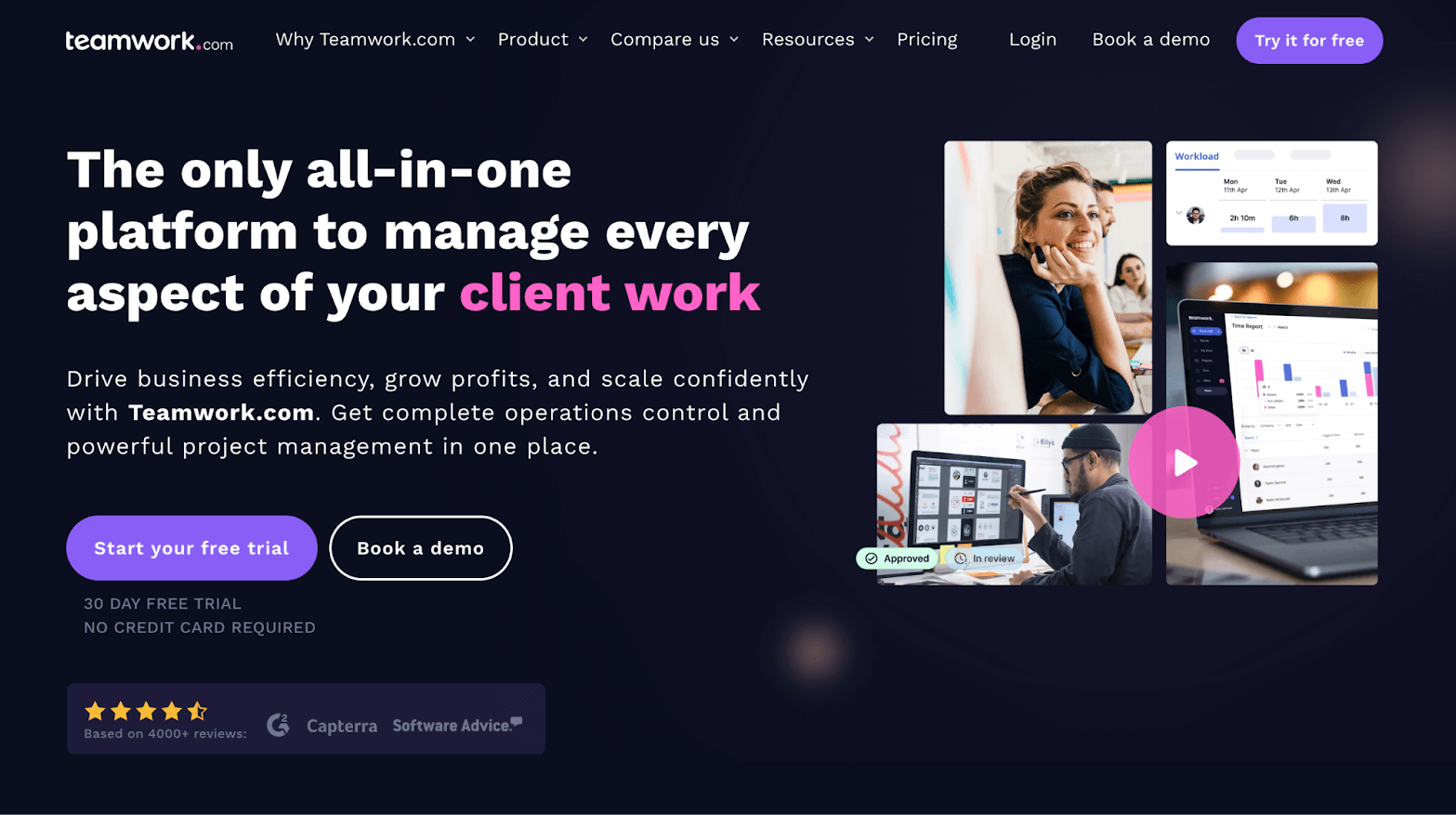
Teamwork is another app-powered marketing operations management solution —they work with teams of all sizes, including global media conglomerates like Netflix and Disney.
Teamwork’s platform includes project intake, project management, resource and workload management, time tracking, team collaboration, budget tracking and financial reporting, invoicing, and client management. Like Robohead, it doesn’t include accounting software or CRM, but you can integrate these tools with Teamwork.
Users like Teamwork because it’s easy to use and affordable. They offer a free 30-day trial, a limited free plan, and budget-friendly packages to upgrade afterward.
Teamwork’s customer experience team assists with onboarding to connect integrations and configure the platform to your requirements. However, onboarding services come at an extra cost and a time investment. (The same cons of Robohead also apply here.)
Notable Features
- Project intake forms & project planning
- Project management
- Project monitoring
- Resource & workload management
- Time tracking
- Internal proofing & collaborative tools
- Workflow automation tools
- Client management
- Expense management
- Budget tracking
- Invoicing
- Reporting
- Integrations & API
- Mobile apps for iOS & Android
Pricing
Teamwork’s packages are as follows:
Teamwork suggests the Grow package because it grants access to resource and workload management. Teams seeking the complete operations management solution will want to choose Grow.
6. Productive
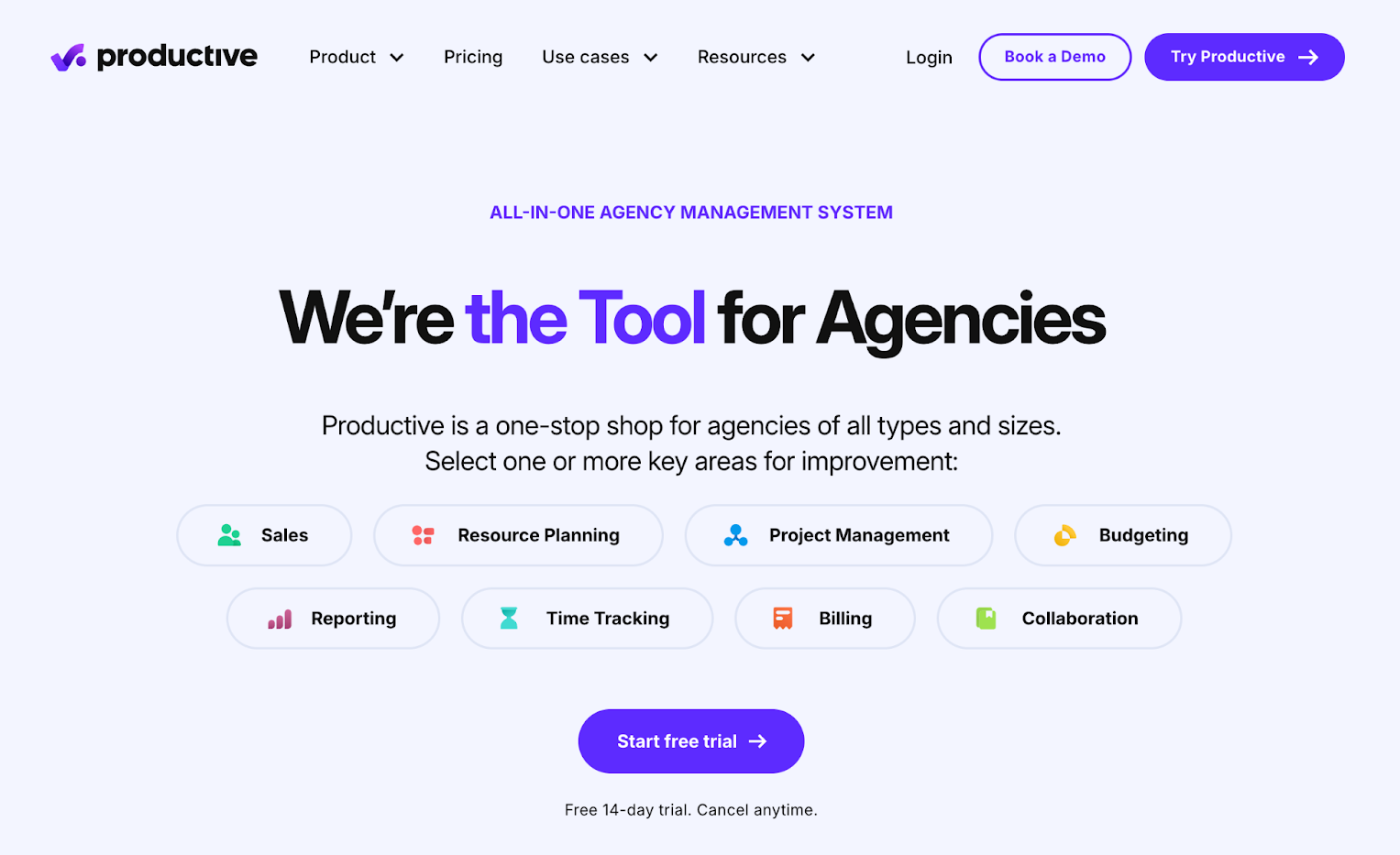
The last option on our list, Productive, is similar to Teamwork and Robohead.
The platform combines project intake, project planning, resource management, time tracking, budget monitoring and financial reporting, and invoicing. It includes a CRM but doesn’t include full accounting software. Instead, Productive integrates with various accounting systems to facilitate those workflows and finalize invoicing.
Productive also offers tiered packages to support different team sizes and scalability. They work with both in-house marketing teams and agencies, but Productive is also a favorite among other creative businesses. Teams like Productive for its modern interface, navigation, and mobile apps.
Productive provides various out-of-the-box integrations, but it also has an open API so teams can integrate any system in their tech stack and tailor Productive to their workflows.
Productive’s team can help with setup and answer questions as you get started. However, unlike the options above, Productive only offers on-premise onboarding for their Enterprise package, so keep that in mind.
Notable Features
- Project intake & sales CRM
- Project management
- Resource management
- Time tracking & timesheets
- Documents (to create shared docs & enable team collaboration)
- Financial management
- Billing & invoicing
- Budget & expense management
- Real-time profitability tracking
- Reporting
- Integrations with QuickBooks, Xero, Sage, SAP, Justworks, ADP, Slack, HubSpot, Google, Microsoft & Jira
- Open API
- Mobile apps for iOS & Android
Pricing
Productive’s packages include:
- Essential — $11/user/month — this plan grants basic platform access. You can manage projects and budgets and use Productive’s time-tracking tool, but this plan lacks resource management. We wouldn’t recommend this package.
- Professional — 28/user/month — this plan provides more advanced features and access to resource management and accounting integrations. You may consider starting with this plan.
- Ultimate — this plan grants full platform access, but Productive doesn’t share pricing for this plan online. You must contact their team for a quote.
- Enterprise — this plan comes with a dedicated account manager. You must contact their team for a custom enterprise quote.
Request a free demo of Workamajig to learn more about our features to manage marketing operations and see how we can tailor our solution to support your goals.
Related reads:
